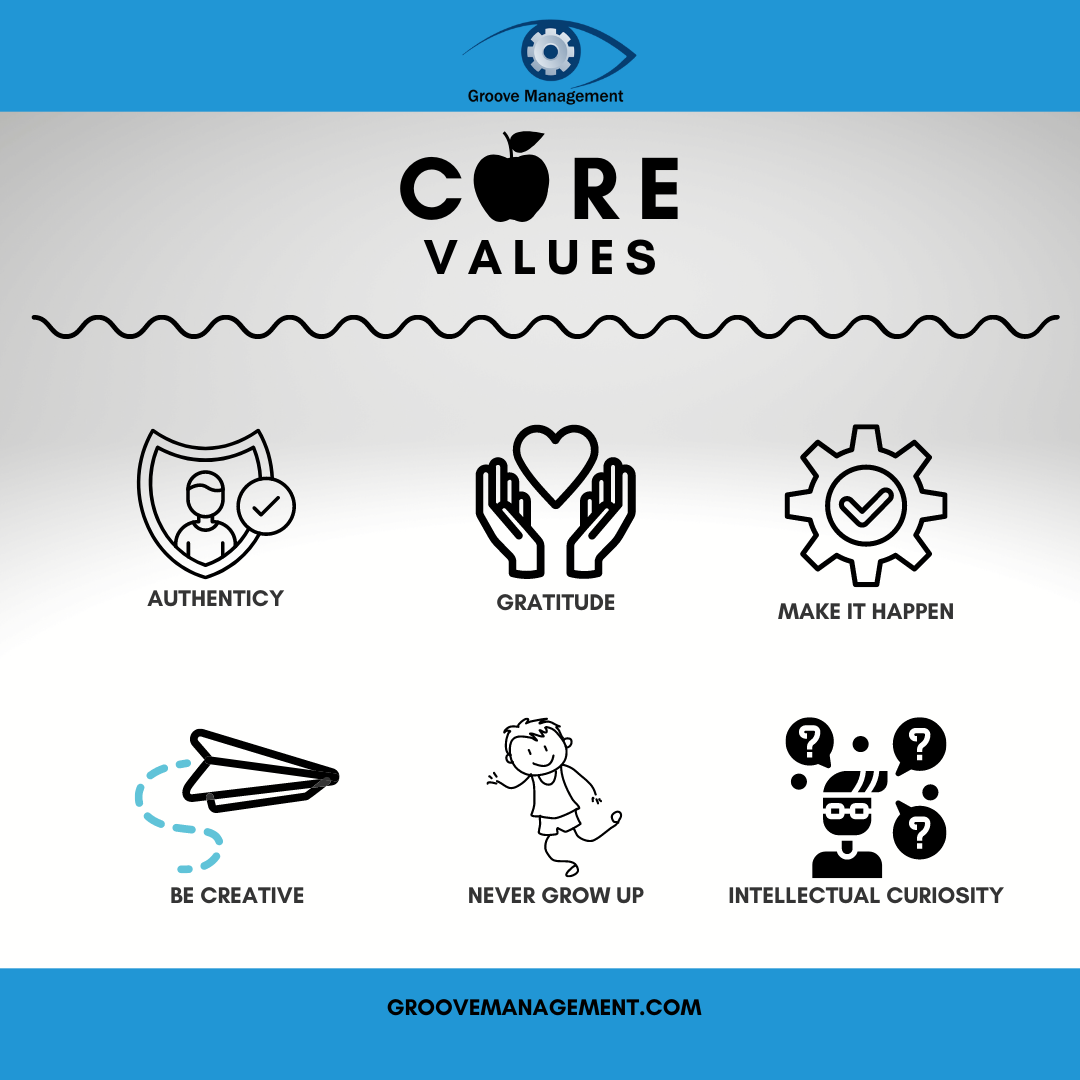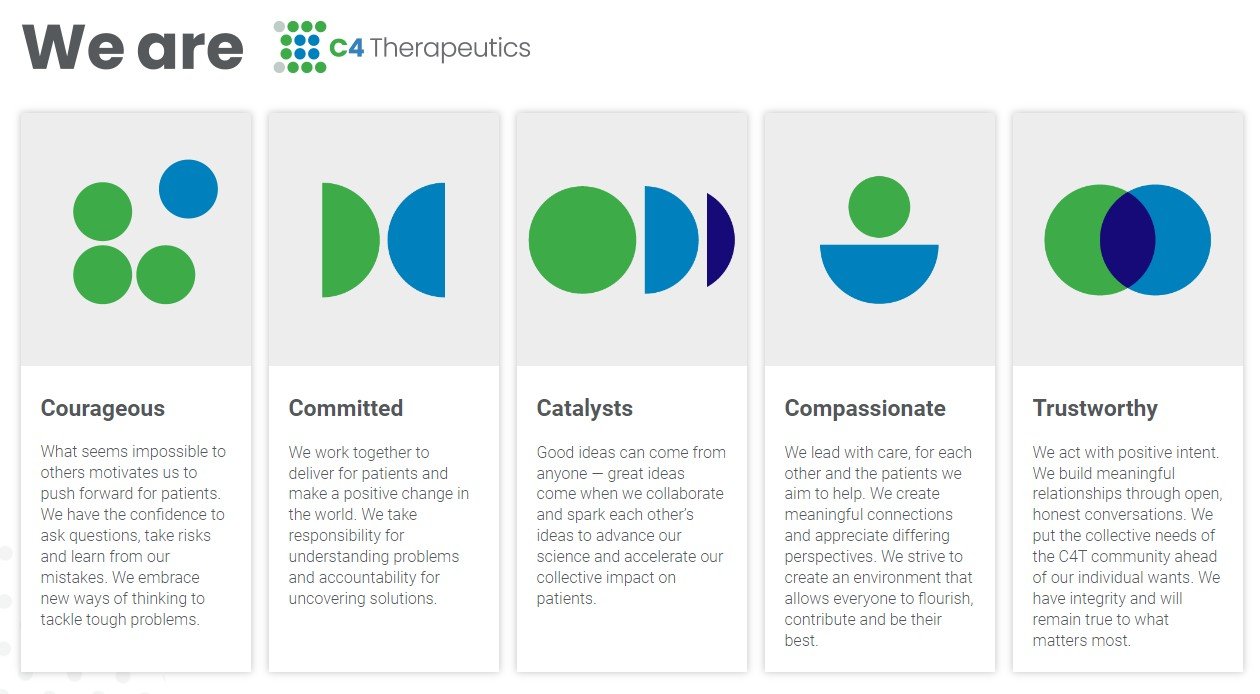Iconic Core Values
One of the best ways to bring core values to life is through iconography. Making your core values visual allows a picture to tell a story. Having core values is important, but living the values is even more critical. Below are three examples of core values that have been brought to life through the use of icons. The images help reinforce the values and tell employees, customers and prospects what each company stands for.



Too many companies try to define who they are by what they do. While what you do matters, why you do it is significantly more important. I have witnessed numerous company achieve early success through the entrepreneurial phase, only to stumble or fail once they reach a certain size or level of maturity.
As a start-up or small company the founder or founders are connected to all aspects of the business. They are fully engaged in each hiring decision and all company decisions have their mark on them. Once an organization has twenty plus employees, the organization takes on a life of its own. No longer can the founder(s) be involved in all decisions. They must trust and empower their employees to make good choices that are aligned with the founder(s) values. The problem is that too many founders fail to articulate their values and the “why” behind starting the business in the first place.
While still in the start-up or entrepreneurial phase, founders should be very deliberate about defining the core values for their organization. Core values are the guiding principles upon which the organization will operate whether there are two employees or twenty thousand.
Having helped dozens of clients define and refine their core values, I have found that the real challenge is not in defining the values, but in bringing them to life. Too often core values become nothing more than words on a piece of paper or on a website.
For core values to be truly valuable to an organization they must be brought to life. To do this, I have found it is more important to focus time and effort on the operationalization of the values than on the creating of them. Core values must be integrated into the entire employee lifecycle. This starts with recruitment. The core values must be on the career website and included in every job posting. During the interview process, it is essential to ask candidates questions to measure their alignment with the core values. Once a hire has been made, the core values must be part of the new hire assimilation process. Performance management and career planning should leverage the core values as a measurement of the “how” an employee is conducting themselves. Value alignment must be used for promotions and for disciplinary action. If an employee grossly violates a core value, they must be either fired or severely reprimanded otherwise, the core values are proven meaningless.
It has been fun to work with a diverse set of companies to define core values and to bring them to life. Creating the visuals to accompany core values is one fun team activity, another one that has worked well has been to have each member of the executive team choose a core value that resonates with them and to shoot a video clip of them talking about the core value. Below are a few examples of video clips for Homecare Homebase defining their core values.
The best companies I work with fully leverage their core values to drive the culture and the business. Helping organizations to create, refine and operationalize core values is our Groove. You can read more about our approach and core values work by clicking below.



